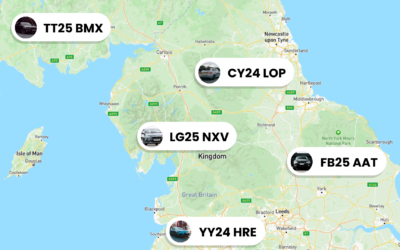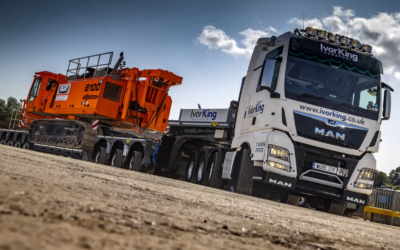Preventive Maintenance for Fleets: A Manager’s Playbook
As a fleet manager, you already know that vehicle downtime and surprise repairs hurt operations, driver morale and the bottom line. This playbook walks you through a practical, hands-on approach to preventive maintenance so you can reduce breakdowns, extend asset life and improve fleet availability. I’ll cover the why, how and which tools to use — plus the governance and cost-control tactics that actually stick in day-to-day operations.
Read on for clear steps you can implement this month, and links to resources that complement your programme, including telematics and KPI reporting guidance. If your team needs hands‑on help, you can always Book demo with Traknova to see the platform in action.
Why Preventive Maintenance Matters
Reactive vs. preventive cost comparison
Reactive maintenance looks cheaper at first glance, because you only spend money when something breaks. In reality, those emergency repairs are typically 2–5x more expensive than scheduled work once labour premiums, towing and secondary damage are accounted for. A disciplined preventive maintenance programme reduces unplanned downtime, lowers repair bills and reduces the risk of larger failures that shorten asset life.
Operational benefits and KPIs
The operational upsides are immediate: better vehicle availability, improved route reliability and steadier fuel efficiency. Trackable KPIs include downtime hours, mean time to repair (MTTR), cost per mile and compliance rate. If you want a concise list to share with stakeholders, see our Fleet Preventive Maintenance: Checklist & KPIs for Managers for templates and examples.
Compliance, safety and risk reduction
Beyond cost savings, preventive maintenance helps ensure vehicles meet safety and regulatory checks. Routine inspections spot worn brakes, tyre issues and lighting faults before they cause incidents or generate fines. That means fewer insurance claims, lower liability exposure and a safer fleet overall — outcomes your board and insurers will appreciate.
Designing Your Preventive Maintenance Program
Define objectives and success metrics
Start with measurable goals: e.g., reduce breakdowns by X%, lower maintenance cost per mile by Y% or increase fleet availability to Z%. Assign primary KPIs and reporting cadence so everyone knows what success looks like. Make objectives timebound and realistic — a 6‑month baseline measurement period helps set achievable targets.
Fleet segmentation and scheduling logic
Not all vehicles are the same. Segment assets by vehicle type, duty cycle, mileage/hours and criticality. Heavy‑use vans might need mileage‑based intervals, while standby vehicles may be serviced on a time or engine‑hours schedule. Use this segmentation to create tailored service intervals rather than a one‑size‑fits‑all calendar that wastes resources.
SOPs, checklists and maintenance task lists
Create simple, repeatable SOPs for each service level and equip technicians with checklists. Standardised tasks reduce missed items and improve handovers. Include driver pre‑trip checks so minor defects are flagged early — a few minutes a day per vehicle can cut service needs later.
Tools, Technology, and Data Integration
Telematics and condition-based monitoring
Use telematics to turn hours and miles into actionable triggers. Condition‑based alerts — engine fault codes, oil life, coolant temperature or excessive idling — let you service vehicles when they need it rather than strictly on schedule. For guidance on proving telematics value and connecting maintenance to savings, see our guide on Prove Telematics ROI.
CMMS and maintenance software best practices
A good CMMS centralises schedules, generates automated work orders and tracks parts usage. Integrate telematics with your CMMS so fault codes auto‑create tickets and technicians get the right context before they arrive. This reduces diagnostic time and speeds repairs.
Dashboards, reporting and analytics
Design dashboards that surface exceptions and trends — overdue services, repeat failures by vehicle, and inventory burn rates. Use analytics to refine intervals and predict failures. If you’re using dashboards to manage overall operations, make sure they link to your wider Fleet Management views so nothing operates in a silo.
Parts, Vendor Management, and Cost Control
Spare parts and inventory strategies
Choose an inventory model that fits your business: just‑in‑time for low-value, easy‑sourced items; min/max or critical‑spare stocks for key components. Use historical usage to set reorder points and avoid stockouts that lengthen downtime. For frequently replaced items, consider multi‑source suppliers to stay flexible.
In-house vs. outsourced services and SLAs
Decide what to keep in‑house and what to outsource based on cost, speciality and turnaround time. Negotiate SLAs with vendors that reflect your uptime requirements, and include penalties or credits for missed commitments. Track vendor performance and rotate if SLAs aren’t met.
Cost-containment and warranty recovery
Recover warranty claims methodically: log failures promptly, capture fault data (telemetry + workshop notes) and submit claims with accurate timestamps. Use remanufactured parts where appropriate and bundle routine services to reduce labour costs. Small process changes here can shave significant spend over a fleet.
Implementing, Scaling, and Continuous Improvement
Pilot, rollout and governance plan
Start with a pilot across a representative vehicle segment and a short time window. Define success criteria, collect baseline metrics and iterate. Create governance with clear ownership — nominate a programme lead responsible for schedules, reporting and continuous improvement.
Training, adoption and change management
Invest in technician and driver training early. Explain the why behind the programme and show how it benefits day‑to‑day work (fewer emergency callouts, predictable schedules). Use incentives and gamification for compliance — small rewards for completed checklists or consistent pre‑trip inspections can shift culture fast.
Audits, RCA and iterative optimization
Perform regular audits and use root‑cause analysis (RCA) for repeat failures. If a component keeps failing, investigate usage patterns, operator behaviour or specification mismatches. Feed insights back into schedules and SOPs so the programme evolves rather than becoming a box‑ticking exercise.
Ready to see how a connected platform simplifies these steps? If you’d like a walkthrough tailored to your fleet, Book demo with Traknova and we’ll demonstrate scheduling, automated work orders and KPI dashboards in your context.
Conclusion & FAQs
Conclusion
Implementing a robust preventive maintenance programme isn’t just about fewer breakdowns — it’s about predictable operations, lower total cost of ownership and a safer fleet. Start with clear objectives, segment your assets, integrate telematics with your CMMS and make continuous improvement a governance priority. The changes you make in the first 90 days will compound over years of reliable service.
FAQ: How often should I service vehicles?
Service frequency depends on duty cycle, mileage and OEM guidance. Use segmentation (mileage, hours, usage profile) rather than a blanket calendar. Combine scheduled intervals with condition‑based triggers from telematics to capture early warning signs.
FAQ: What KPIs matter most?
Prioritise downtime hours, MTTR, maintenance cost per mile and compliance rate. Measure baseline performance and report monthly to show programme impact. For a ready checklist and KPI definitions, see our Preventive Maintenance checklist & KPIs.
FAQ: Can telematics really reduce maintenance costs?
Yes. Telematics helps you shift from time‑based servicing to condition‑based servicing, catching issues early and reducing unnecessary work. If you’d like to align telematics data to maintenance workflows, our telemetrics ROI guide explains how to measure savings.
Feedback, shares and next steps
Thanks for reading — your feedback helps make these guides more useful. What’s your biggest maintenance challenge right now: inventory, technician capacity, or inconsistent inspections? Reply with your top pain point or share this post on social if it helped your planning. If you want tailored support, Book demo or Contact us to discuss a consultation.
Further resources
Related reading
For more on optimising fleet operations and telematics value, explore:
- Fleet Telematics: Cost‑Cutting Playbook for Managers
- Fleet Electrification Guide for Fleet Directors
- How Telematics Helps Fleet Operators Comply with Driver Hours and Safety Regulations
Final call to action: Ready to turn plans into uptime? Book demo or Contact us for a consultation and we’ll help you design a preventive maintenance programme that fits your fleet size and budget.










